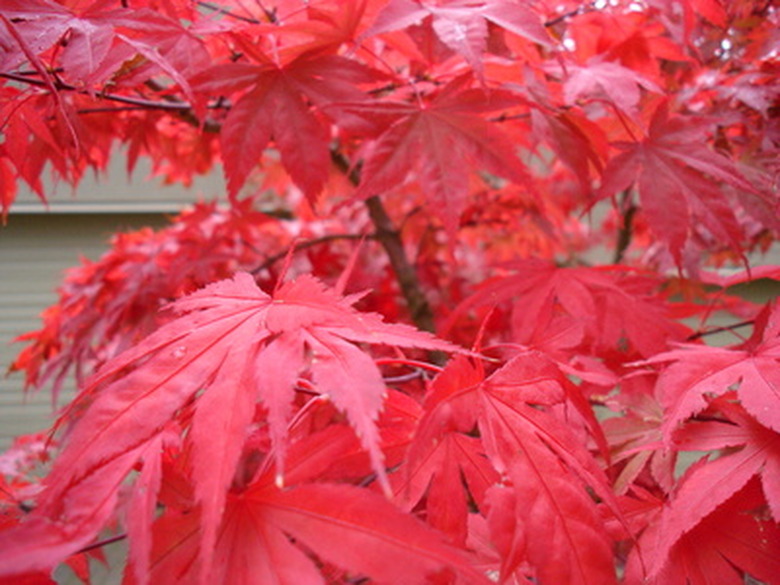Japanese Maple Tree Facts
The Japanese maple comes in more than 400 varieties. The height of the trees varies from 1 foot to 100 feet, depending on the variety, but the more popular varieties used in landscaping tend to be small, and average 15 to 25 feet high. They are valued for the delicate-looking structure of their branches and the showy fall color of their leaves.
Habitat Facts of the Japanese Maple
The Japanese maple is not native to America. It originated in Japan, China and Korea. In this environment, Japanese maples normally grow as understory trees; subsequently most prefer partial shade. They thrive in well-drained soil, but also do well as container plants. They prefer to be kept moist and out of drying winds.
- The Japanese maple comes in more than 400 varieties.
- The height of the trees varies from 1 foot to 100 feet, depending on the variety, but the more popular varieties used in landscaping tend to be small, and average 15 to 25 feet high.
Facts about the Japanese Maple
The Japanese maple tree is known scientifically as Acer palmatum; the name is derived from the hand shape of the tree's leaves. It is a deciduous, slow-growing tree. The Japanese maple does well in hardiness zone 5B through 8. Leaves are serrated and grow to 2 to 4 inches in length. Leaves may have 5, 7 or 9 lobes.
Disease Facts
Exposure to high temperatures and wind, lack of adequate water and poor root development can lead to scorch, a major problem for Japanese maples. Symptoms include light brown patches on leaves between veins and may occur all over the tree or only on the side exposed to the sun and wind. If scorch becomes extreme, it can cause leaf drop, which could cause the tree to die. Tap spot and leaf spot, fungal infections that leave brown or black spots on leaves, also occur, but generally do not harm the tree.
- The Japanese maple tree is known scientifically as Acer palmatum; the name is derived from the hand shape of the tree's leaves.
- Tap spot and leaf spot, fungal infections that leave brown or black spots on leaves, also occur, but generally do not harm the tree.
Color Facts
Leaves are green in the summer, changing to a showy display of yellow, orange, red or purple in the fall. Fall colors develop late in the season and hold well. Fruits are red to green, but do not attract much attention. Spring flowers are smallish and bloom red or purple in May to June. The bark of the trunk and main limbs are gray, while twigs are either green or red. The distinctive shape of the barren tree branches in winter is another of the tree's prized aesthetic values.
Usage Facts
The Japanese maple, with its delicate and colorful leaves, can be used as a focal point for a garden. It can also serve as a backdrop for other plants in a landscape or for accenting a rock garden. The domed canopy of the mature Japanese maple performs well as a shade tree, though it needs protection from scorch.
- Leaves are green in the summer, changing to a showy display of yellow, orange, red or purple in the fall.
- The domed canopy of the mature Japanese maple performs well as a shade tree, though it needs protection from scorch.
